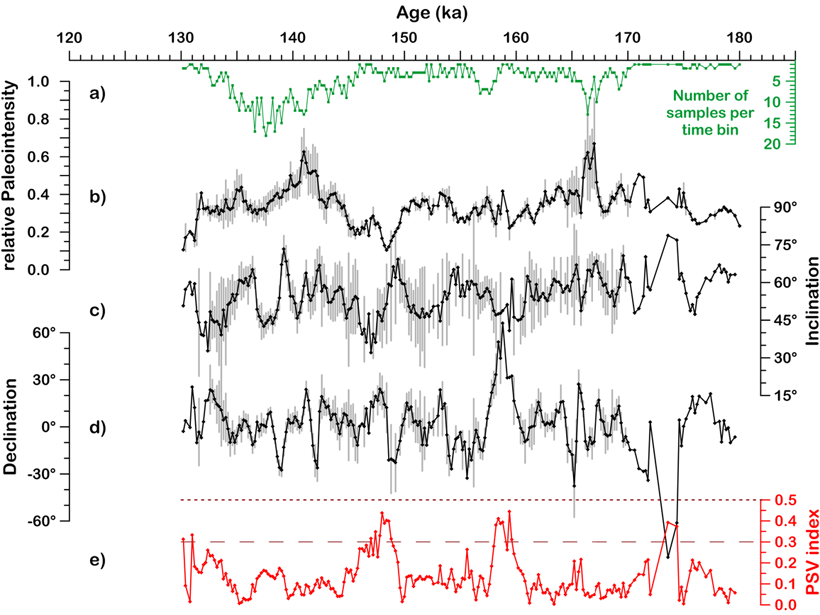Source: Journal of Geophysical Research: Solid Earth
It is challenging to generate robust high-resolution full-vector field records of Earth’s magnetic field (i.e. records of declination, inclination, and (relative) intensity) that describe its paleosecular variation (PSV) and offer insight into the stability of the field.
Nowaczyk et al. [2021] beautifully succeed in this endeavor by presenting a composite 200-yr resolution record stacked from twelve individual piston core records from the Black Sea for marine isotope stage 6, 130-180 ka (kilo annum, thousands of years). The stack starts from correlating geochemical records while the age model is provided by detailed oxygen isotope stratigraphy on three of the twelve cores constrained by U-Th dated oxygen isotope records from nearby on land locations. Based on extensive magnetic property information, the authors filter out unsuited sediment levels (considerable portions of individual piston cores) and stack the remainder to reach an unprecedented high-resolution PSV record for this period.
For most of it, the field appears to be stable with standard PSV levels, with the exception of an easterly swing in declination at ~159 ka and an intensity low accompanied with low inclinations at ~148 ka (the westerly swing in declination at ~174 ka is deemed less significant since it comes from the only lower resolution portion of the record). However, even these deviations do not yet resemble more extreme excursional field behavior. The record sets the stage for the quest to equally high-resolution records from elsewhere on the globe to answer the question whether observed stability is a regional feature or truly global.
Citation: Nowaczyk, N. R., Liu, J., Plessen, B., Wegwerth, A., & Arz, H. W. [2021]. A high‐resolution paleosecular variation record for marine isotope stage 6 from Southeastern Black Sea sediments. Journal of Geophysical Research: Solid Earth, 126, e2020JB021350. https://doi.org/10.1029/2020JB021350
—Mark J. Dekkers, Associate Editor, JGR: Solid Earth
Text © 2021. The authors. CC BY-NC-ND 3.0
Except where otherwise noted, images are subject to copyright. Any reuse without express permission from the copyright owner is prohibited.

